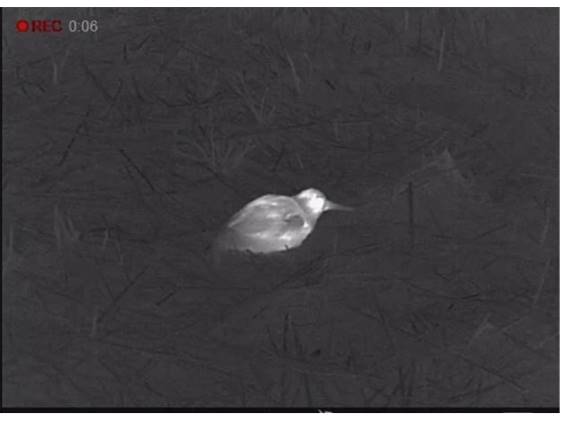Thermal Imaging In Ornithology on:
[Wikipedia]
[Google]
[Amazon]
 The use of
The use of  One
One
West Midlands Ringing Group
* {{YouTube, id=qFrw4U05BOE , title= "Stunning skylark breakthrough!" - BBC
 The use of
The use of thermal imaging
Infrared thermography (IRT), thermal video or thermal imaging, is a process where a thermal camera captures and creates an image of an object by using infrared radiation emitted from the object in a process, which are examples of infrared im ...
devices to monitor birds began in the 1960s. It underwent significant development from the end of the 20th century onwards. This was, at least in part, due to improvements in the quality and portability of thermal-imaging devices, and reductions in their cost.
Although primarily a nocturnal activity, thermal imaging can also be used in daylight, for example monitoring Eurasian bittern
The Eurasian bittern or great bittern (''Botaurus stellaris'') is a wading bird in the bittern subfamily (Botaurinae) of the heron family Ardeidae. There are two subspecies, the northern race (''B. s. stellaris'') breeding in parts of Europe and ...
(''Botaurus stellaris'') and water rail
The water rail, western water rail or European water rail (''Rallus aquaticus'') is a bird of the rail family which breeds in well-vegetated wetlands across Europe, Asia and North Africa. Northern and eastern populations are migratory, but this ...
(''Rallus aquaticus'') in dense vegetation.
 One
One bird ringing
Bird ringing (UK) or bird banding (US) is the attachment of a small, individually numbered metal or plastic tag to the leg or wing of a wild bird to enable individual identification. This helps in keeping track of the movements of the bird an ...
organisation, the West Midlands Ringing Group
West is one of the four cardinal directions or points of the compass. It is the opposite direction from east and is the direction in which the Sun sets on the Earth.
Etymology
The word "west" is a Germanic word passed into some Romance langu ...
(formerly Brewood Ringers), caught and rung 424 adult skylark
''Alauda'' is a genus of larks found across much of Europe, Asia and in the mountains of north Africa, and one of the species (the Raso lark) endemic to the islet of Raso in the Cape Verde Islands
Cape Verde or Cabo Verde, officially ...
s (''Alauda arvensis'') in 2019, using thermal imaging to locate them; this was 81.4% of the total caught Britain & Ireland that year. The group subsequently received the 2021 Marsh Award for Innovative Ornithology for their innovative use of thermal imaging technology in monitoring farmland birds. The group uses Pulsar Helion thermal imaging cameras and have determined that this not only helps them to find more birds, but reduces the disturbance caused to the birds, due to needing to spend less time in the field.
Other taxa
Thermal imaging has also been used to monitor mammal species includingbat
Bats are flying mammals of the order Chiroptera (). With their forelimbs adapted as wings, they are the only mammals capable of true and sustained flight. Bats are more agile in flight than most birds, flying with their very long spread-out ...
s, mice
A mouse (: mice) is a small rodent. Characteristically, mice are known to have a pointed snout, small rounded ears, a body-length scaly tail, and a high breeding rate. The best known mouse species is the common house mouse (''Mus musculus' ...
, and ungulate
Ungulates ( ) are members of the diverse clade Euungulata ("true ungulates"), which primarily consists of large mammals with Hoof, hooves. Once part of the clade "Ungulata" along with the clade Paenungulata, "Ungulata" has since been determined ...
s, and even the health of trees.
References
External links
West Midlands Ringing Group
* {{YouTube, id=qFrw4U05BOE , title= "Stunning skylark breakthrough!" - BBC
Midlands Today
''BBC Midlands Today'' is the BBC's regional television news service for the West Midlands (region), West Midlands. It was launched in 1964 and is presented by Mary Rhodes, Nick Owen, Elizabeth Glinka, Rebecca Wood and Shefali Oza.
Overview
...
news report, presented by David Gregory-Kumar, showing bird ringing using thermal imaging in progress
Ornithology
Photographic techniques